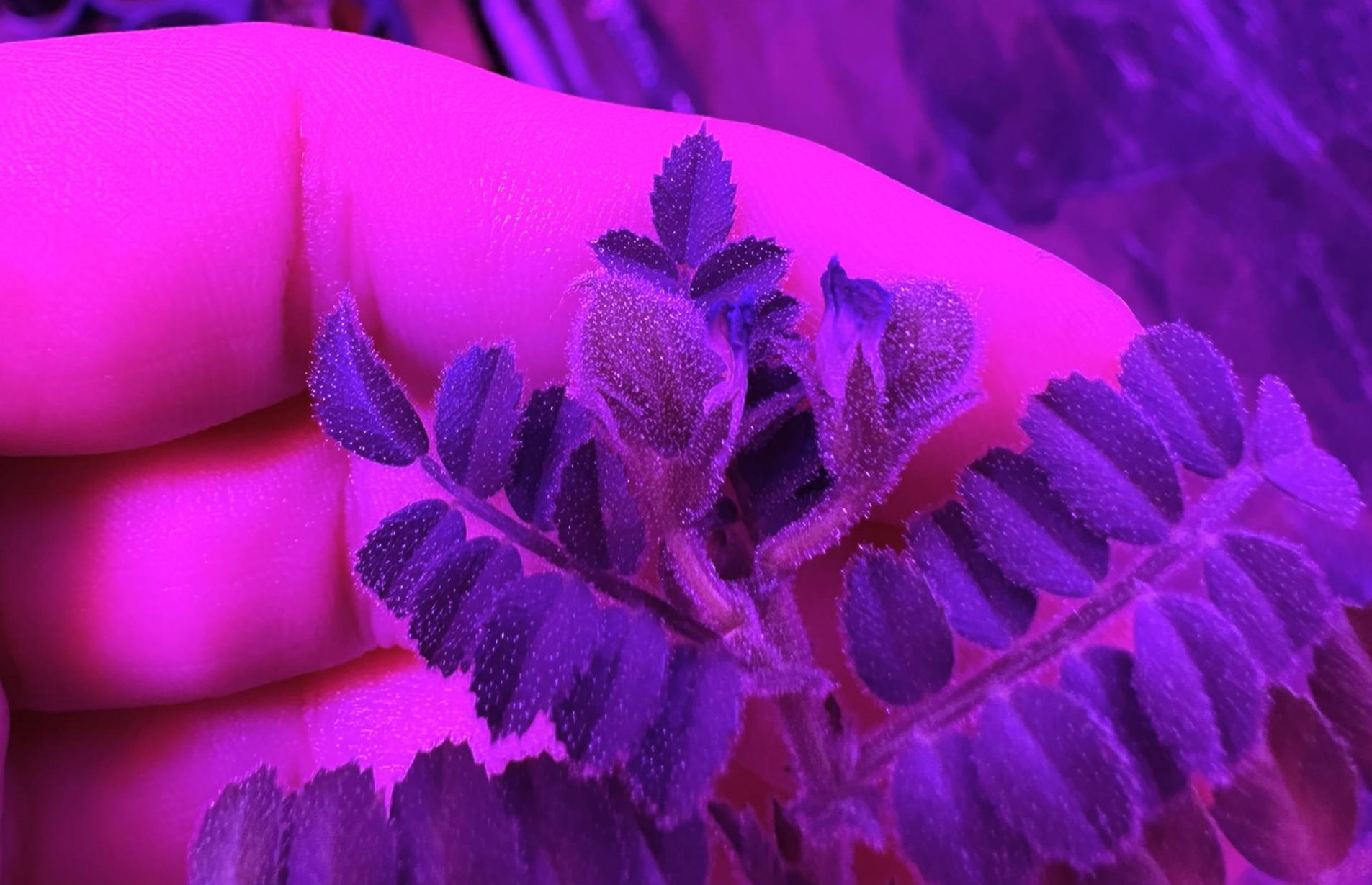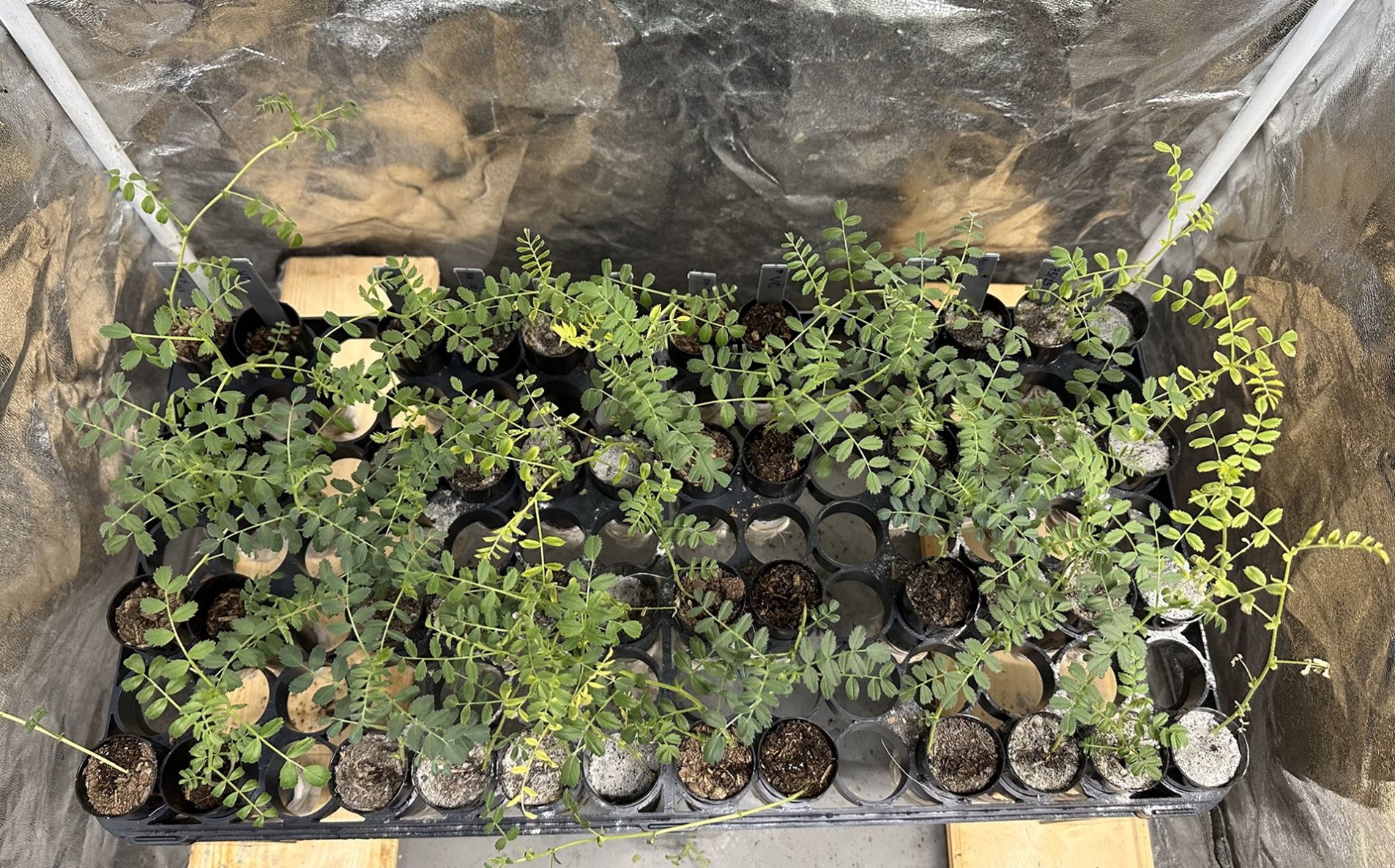News
Texas A&M Grad Student Achieves World First By Growing Chickpeas In Moondust Mixture
By Kay Ledbetter, Texas A&M AgriLife Marketing & Communications
A love for space exploration led Jessica Atkin, a Texas A&M College of Agriculture and Life Sciences graduate student in the Department of Soil and Crop Sciences, to produce the first-ever moondust-grown chickpeas.
Using simulated moondust, because there’s not enough lunar regolith on Earth for experimentation, Atkin and her colleagues grew chickpeas to seed in mixtures of up to 75% moondust — a groundbreaking endeavor in several aspects.

As a result of her study, future moon-bound astronauts may have the opportunity to substitute a portion of their prepackaged foods with protein derived from crops grown on the lunar surface.
“The Moon doesn’t have soil like Earth does,” Atkin said. “On Earth, the soil has organic material filled with nutrients and microorganisms, which support plant growth. Those are missing on the moon. This adds to other challenges, such as reduced gravity, radiation and toxic elements.”
To help address some of those challenges, Atkin has been developing a soil amendment to improve the structure and nutrient composition of lunar dust, making it suitable for growing crops.
Atkin collaborated on the project with Sara Oliveira Santos, a doctoral candidate at Brown University, who contributed expertise in addressing hydrological issues arising from the small particle size of the moondust.
Moondust Research
Atkin has been working on this research under the guidance of her advisors, Dr. Terry Gentry, soil and water microbiologist in the Department of Soil and Crop Sciences, and Dr. Betsy Pierson, an expert in plant-microbe interactions in the Department of Horticultural Sciences. Also contributing to the research is Dr. George Vandemark, a U.S. Department of Agriculture legume breeder and faculty member at Washington State University in Pullman, Washington.
Using soil regeneration mechanisms from Earth, Atkin leveraged the interaction between beneficial soil fungi and vermicompost, or worm manure, to create a fertile moondust. These amendments help sequester toxic contaminants from the dust, change the soil structure for better hydraulic properties, and increase plant tolerance to stressors and toxins.
Three primary actions help fungi address elemental contamination. First, toxins are sequestered and bound in the soil mixture, making them less available for plant uptake. This prevents contaminants from being taken up by plant roots. If some toxin gets by, the fungus traps it in its own biomass and that of the plant root, limiting the amount of toxins taken into the vegetation and seeds.

Vermicompost is used to provide nutrients and change the physical properties of the lunar dust composition. Atkin said red wiggler worms can be taken to the moon, where they can decompose biowaste such as clothing, hygiene items and food scraps created by astronauts.
Atkin said she chose chickpeas because they are legumes that form beneficial relationships with fungi.
“They are a great protein source and use less water and nitrogen than other food crops,” she said. “We used a desi chickpea variety to deal with the space limitations inside a habitat.”
Using these techniques, Atkin successfully grew chickpeas to seed in up to 75% lunar regolith simulant, a documented first. However, she noted a caveat: although chickpeas typically take about 100 days to produce on Earth, in lunar mixtures, they required 120 days to mature, and all plants showed symptoms of stress.
Sustainability In Space
Atkin said she will continue studying the multigenerational effects and believes that once the soil matrix is transformed, it could lead to the ability to grow other crops.
While Atkin said there are many variables, this could be a solution for long-term waste reduction, and sustainability of lunar travel and exploration.
“The novelty about using vermiculture is that it can all be done in space, whether in a space station or on the moon, reducing the need for resupply missions,” she said.